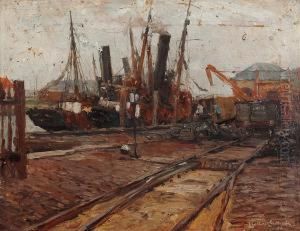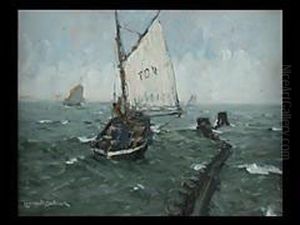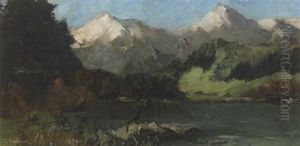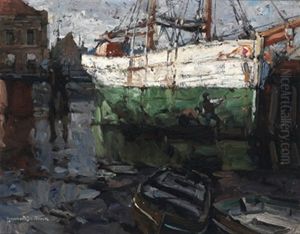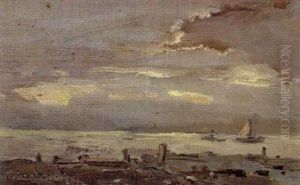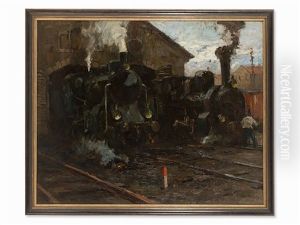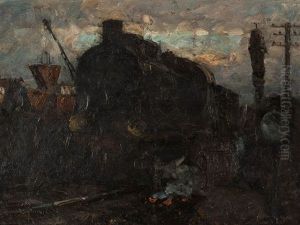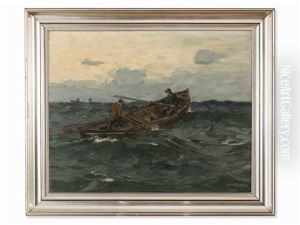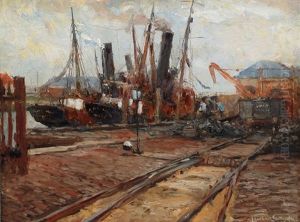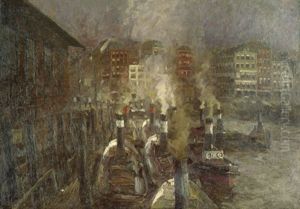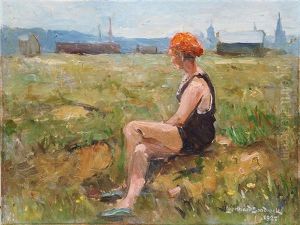Leonhard Sandrock Paintings
Leonhard Sandrock was a German painter and graphic artist, born on May 26, 1867, in Breslau, which was then part of Prussia and is now Wrocław, Poland. His artistic pursuits began at a young age, and he initially trained as a decorative painter in his hometown. Sandrock's early work primarily consisted of decorative frescoes and designs for stained glass windows, showcasing his skill in these mediums.
Sandrock's artistic career evolved as he furthered his education at the Royal Academy of Arts in Berlin. During his time at the academy, he was influenced by the academic art traditions of the period, which emphasized classical themes and technical precision. His work from this period often reflected historical and mythological scenes, executed with a high level of detail and a preference for realism.
After completing his studies, Sandrock became an active participant in the German art scene. He exhibited his work at various art shows and became a member of several art associations. Sandrock's paintings and graphic works were well-received by critics and the public alike, and he gained a reputation for his landscapes and portraits. His style was characterized by a traditional approach, with a focus on naturalism and a meticulous attention to detail.
Sandrock's career spanned the tumultuous periods of World War I and World War II, and these events inevitably influenced his work and opportunities. Despite the changing artistic trends of the early 20th century, such as the rise of Expressionism and abstraction, Sandrock remained committed to his classical roots.
Leonhard Sandrock's contributions to German art were recognized during his lifetime, but with the shifting art historical narratives of the post-war period, his work became less prominent in discussions of early 20th-century art. Sandrock passed away on February 19, 1945, in Berlin. Today, while he may not be as widely known as some of his contemporaries, Sandrock's art provides a window into the traditional artistic practices that coexisted alongside the avant-garde movements of his time.






